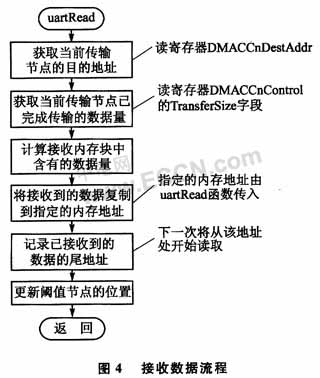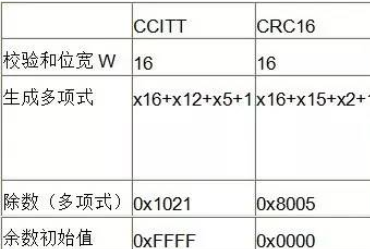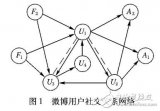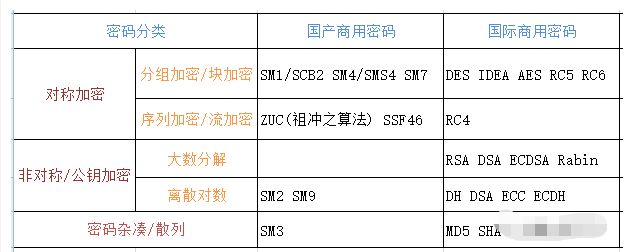1、單向散列算法
單向散列算法,又稱hash哈希函數,Hash函數(也稱雜湊算法)就是把任意長的輸入消息串變化成固定長的輸出串的一種函數,該過程是不可逆的。Hash函數可用于數字簽名、消息的完整性檢測、消息起源的認證檢測等。較為常用的方法包括MD算法和SHA算法。
1.1 MD(Message Digest)消息摘要算法
MD系列算法分為MD2、MD4、MD5三種算法,最常用的是MD5版本算法,用來把不同長度的數據塊進行暗碼運算成一個128位的散列值(hash value),用于確保信息傳輸完整一致。
應用場景:嵌入式系統開發中,MD5一般用于校驗文件的完整性,如通過網絡下載的文件,可能缺少部分或者被篡改,通過計算實際接收文件的MD5碼,與原始MD5比較,判斷文件是否正確。在密碼存儲方面,將用戶輸入的明文密碼轉成MD5碼保存,后期應用只匹配比較MD5碼,這樣即使后臺管理員也無法查看到真實密碼。
具體算法可以參考 [ 嵌入式算法9---MD5的應用與實現 ]
1.2 SHA(Secure Hash Algorithm)安全散列算法
SHA是一個密碼散列函數家族,SHA算法主要分為SHA-1、SHA-2、SHA-3 三大類,一般使用SHA-2算法,主要有SHA-256、SHA-512、SHA-224、SHA-384四種,對于嵌入式一般選擇SHA256,將任意長度的輸入壓縮成256位,且哈希碰撞的概率近乎為0。
應用場景:數字簽名、數字時間戳、數字證書。
1.3 MAC(Message Authentication Code)消息認證碼
對稱加密算法是為了保證數據的機密性,hash算法是為了驗證數據的完整性,而MAC算法既可以驗證數據的完整性,又可以驗證數據是否被篡改。似乎嵌入式開發中少見。
2、SHA256
一般嵌入式系統簽名或者校驗復雜版使用SHA256,也就是長度小于2^64字節的任意數據,經過哈希運算得到256比特的消息摘要。
2.1 源碼
SHA256源碼如下:
#include "stdlib.h"
//sha256.h
#define SHA256_BLOCK_SIZE 32 //SHA 256bits = 32Bytes
typedef unsigned char uint8_t;
typedef unsigned int uint32_t;
typedef struct
{
uint8_t data[64];
uint32_t datalen;
unsigned long long bitlen;
uint32_t state[8];
} sha256_ctx_t;
//api
extern void sha256_init(sha256_ctx_t *ctx);
extern void sha256_update(sha256_ctx_t *ctx, const uint8_t data[], uint32_t len);
extern void sha256_final(sha256_ctx_t *ctx, uint8_t hash[]);
//sha256.c
/****************************** MACROS ******************************/
#define ROTLEFT(a,b) (((a) << (b)) | ((a) >> (32-(b))))
#define ROTRIGHT(a,b) (((a) >> (b)) | ((a) << (32-(b))))
#define CH(x,y,z) (((x) & (y)) ^ (~(x) & (z)))
#define MAJ(x,y,z) (((x) & (y)) ^ ((x) & (z)) ^ ((y) & (z)))
#define EP0(x) (ROTRIGHT(x,2) ^ ROTRIGHT(x,13) ^ ROTRIGHT(x,22))
#define EP1(x) (ROTRIGHT(x,6) ^ ROTRIGHT(x,11) ^ ROTRIGHT(x,25))
#define SIG0(x) (ROTRIGHT(x,7) ^ ROTRIGHT(x,18) ^ ((x) >> 3))
#define SIG1(x) (ROTRIGHT(x,17) ^ ROTRIGHT(x,19) ^ ((x) >> 10))
/**************************** VARIABLES *****************************/
static const uint32_t k[64] =
{
0x428a2f98, 0x71374491, 0xb5c0fbcf, 0xe9b5dba5, 0x3956c25b, 0x59f111f1, 0x923f82a4, 0xab1c5ed5,
0xd807aa98, 0x12835b01, 0x243185be, 0x550c7dc3, 0x72be5d74, 0x80deb1fe, 0x9bdc06a7, 0xc19bf174,
0xe49b69c1, 0xefbe4786, 0x0fc19dc6, 0x240ca1cc, 0x2de92c6f, 0x4a7484aa, 0x5cb0a9dc, 0x76f988da,
0x983e5152, 0xa831c66d, 0xb00327c8, 0xbf597fc7, 0xc6e00bf3, 0xd5a79147, 0x06ca6351, 0x14292967,
0x27b70a85, 0x2e1b2138, 0x4d2c6dfc, 0x53380d13, 0x650a7354, 0x766a0abb, 0x81c2c92e, 0x92722c85,
0xa2bfe8a1, 0xa81a664b, 0xc24b8b70, 0xc76c51a3, 0xd192e819, 0xd6990624, 0xf40e3585, 0x106aa070,
0x19a4c116, 0x1e376c08, 0x2748774c, 0x34b0bcb5, 0x391c0cb3, 0x4ed8aa4a, 0x5b9cca4f, 0x682e6ff3,
0x748f82ee, 0x78a5636f, 0x84c87814, 0x8cc70208, 0x90befffa, 0xa4506ceb, 0xbef9a3f7, 0xc67178f2
};
static void sha256_transform(sha256_ctx_t *ctx, const uint8_t data[])
{
uint32_t a, b, c, d, e, f, g, h, i, j, t1, t2, m[64];
for(i = 0, j = 0; i < 16; ++i, j += 4)
{
m[i] = (data[j] << 24) | (data[j + 1] << 16) | (data[j + 2] << 8) | (data[j + 3]);
}
for(; i < 64; ++i)
{
m[i] = SIG1(m[i - 2]) + m[i - 7] + SIG0(m[i - 15]) + m[i - 16];
}
a = ctx->state[0];
b = ctx->state[1];
c = ctx->state[2];
d = ctx->state[3];
e = ctx->state[4];
f = ctx->state[5];
g = ctx->state[6];
h = ctx->state[7];
for(i = 0; i < 64; ++i)
{
t1 = h + EP1(e) + CH(e, f, g) + k[i] + m[i];
t2 = EP0(a) + MAJ(a, b, c);
h = g;
g = f;
f = e;
e = d + t1;
d = c;
c = b;
b = a;
a = t1 + t2;
}
ctx->state[0] += a;
ctx->state[1] += b;
ctx->state[2] += c;
ctx->state[3] += d;
ctx->state[4] += e;
ctx->state[5] += f;
ctx->state[6] += g;
ctx->state[7] += h;
}
void sha256_init(sha256_ctx_t *ctx)
{
ctx->datalen = 0;
ctx->bitlen = 0;
ctx->state[0] = 0x6a09e667;
ctx->state[1] = 0xbb67ae85;
ctx->state[2] = 0x3c6ef372;
ctx->state[3] = 0xa54ff53a;
ctx->state[4] = 0x510e527f;
ctx->state[5] = 0x9b05688c;
ctx->state[6] = 0x1f83d9ab;
ctx->state[7] = 0x5be0cd19;
}
void sha256_update(sha256_ctx_t *ctx, const uint8_t data[], uint32_t len)
{
uint32_t i;
for(i = 0; i < len; ++i)
{
ctx->data[ctx->datalen] = data[i];
ctx->datalen++;
if(ctx->datalen == 64)
{
sha256_transform(ctx, ctx->data);
ctx->bitlen += 512;
ctx->datalen = 0;
}
}
}
void sha256_final(sha256_ctx_t *ctx, uint8_t hash[])
{
uint32_t i;
i = ctx->datalen;
// Pad whatever data is left in the buffer.
if(ctx->datalen < 56)
{
ctx->data[i++] = 0x80;
while(i < 56)
{
ctx->data[i++] = 0x00;
}
}
else
{
ctx->data[i++] = 0x80;
while(i < 64)
{
ctx->data[i++] = 0x00;
}
sha256_transform(ctx, ctx->data);
memset(ctx->data, 0, 56);
}
// Append to the padding the total message's length in bits and transform.
ctx->bitlen += ctx->datalen * 8;
ctx->data[63] = ctx->bitlen;
ctx->data[62] = ctx->bitlen >> 8;
ctx->data[61] = ctx->bitlen >> 16;
ctx->data[60] = ctx->bitlen >> 24;
ctx->data[59] = ctx->bitlen >> 32;
ctx->data[58] = ctx->bitlen >> 40;
ctx->data[57] = ctx->bitlen >> 48;
ctx->data[56] = ctx->bitlen >> 56;
sha256_transform(ctx, ctx->data);
// Since this implementation uses little endian byte ordering and SHA uses big endian,
// reverse all the bytes when copying the final state to the output hash.
for(i = 0; i < 4; ++i)
{
hash[i] = (ctx->state[0] >> (24 - i * 8)) & 0x000000ff;
hash[i + 4] = (ctx->state[1] >> (24 - i * 8)) & 0x000000ff;
hash[i + 8] = (ctx->state[2] >> (24 - i * 8)) & 0x000000ff;
hash[i + 12] = (ctx->state[3] >> (24 - i * 8)) & 0x000000ff;
hash[i + 16] = (ctx->state[4] >> (24 - i * 8)) & 0x000000ff;
hash[i + 20] = (ctx->state[5] >> (24 - i * 8)) & 0x000000ff;
hash[i + 24] = (ctx->state[6] >> (24 - i * 8)) & 0x000000ff;
hash[i + 28] = (ctx->state[7] >> (24 - i * 8)) & 0x000000ff;
}
}
/***********************************************************************/
//test
void log(char *head, uint8_t *data, uint8_t len)
{
uint8_t i;
printf("%s:", head);
for(i = 0; i < len; i++)
{
printf("%02X ", data[i]);
}
printf("\\r\\n");
}
int main(int argc, char *argv[])
{
uint8_t buff1[] = {"embedded-system"};
uint8_t buff2[] = {0x00, 0x65, 0x00, 0x6D, 0x00, 0x62, 0x00, 0x65, 0x00, 0x64, 0x00, 0x64, 0x00, 0x65, \\
0x00, 0x64, 0x00, 0x2D, 0x00, 0x73, 0x00, 0x79, 0x00, 0x73, 0x00, 0x74, 0x00, 0x65, 0x00, 0x6D
};
uint8_t sha256_result[32] = {0};
sha256_ctx_t sha;
sha256_init(&sha);
sha256_update(&sha, buff1, strlen(buff1));
sha256_final(&sha, sha256_result);
log("buff1 sha256", sha256_result, 32);
sha256_init(&sha);
sha256_update(&sha, buff2, sizeof(buff2));
sha256_final(&sha, sha256_result);
log("buff2 sha256", sha256_result, 32);
sha256_init(&sha);
sha256_update(&sha, buff1, strlen(buff1));
sha256_update(&sha, buff1, strlen(buff1));
sha256_update(&sha, buff1, strlen(buff1));
sha256_final(&sha, sha256_result);
log("buff1*3 sha256", sha256_result, 32);
return 0;
}
2.2 應用
對嵌入式系統,在RAM空間有限的情況下,對較長的數據進行運算,SHA256是可以分段多次傳入數據的。如上使用范例第3段所示。一般用于校驗密鑰或文件是否傳輸錯誤或被篡改。
3、 SHA256與MD5比較
一般嵌入式系統使用的單向散列函數是MD5和SHA256。兩者都是實現對任意長度輸入,經運算輸出固定長度的摘要數據。
無限多可能的輸入數據轉換成了數量有限的輸出值,理論上是會出現兩個不同的輸入值運算結果相同,這種情況稱為碰撞,即不同的消息產生同一個散列值的情況。
MD5是輸出128比特的散列值,而SHA256是256比特;可見SHA256的安全性略高,但其運算耗時也多。
具體應用選擇哪種并沒太嚴格的標準。
-
MD
+關注
關注
0文章
11瀏覽量
15959 -
Hash
+關注
關注
0文章
32瀏覽量
13248 -
HASH函數
+關注
關注
0文章
4瀏覽量
5756
發布評論請先 登錄
相關推薦
【下載】《嵌入式系統軟件設計中的數據結構》
嵌入式小波編碼算法的原理是什么?
基于嵌入式TCP/IP協議單片機的雜散電流監測系統
散列DMA設計的高速串口驅動技術

嵌入式開發的crc算法知識精選

基于散列及位圖的改進關聯規則算法BHA

基于KCF的目標跟蹤算法研究及嵌入式系統實現





 嵌入式的單向散列算法
嵌入式的單向散列算法











評論